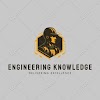WHAT IS THE VALVE?
- A valve is a device that controls not only a flow, but also the rate, the volume and the pressure, direction of liquids, gases, toxic gases, slurries through a pipeline chute or passageway.
REASONS FOR FITTINGS?
- Complete isolation
- Throttle
TYPES OF VALVES:
Basically the valve types are classified into 8 types there are,
- Screw down valve
- Parallel slide valve
- Gate valve
- Check valve
- Ball valve
- Butterfly valve
- Diaphragm valve
- Bellow seal valve
SCREW DOWN VALVE:
- It uses threaded spindle to control valve position
There are four types of valve seat and geometry
- Mitre valve
- Flat valve
- Globe valve
- Hemispherical valve
PARELLEL SLIDE VALVE(PSV VALVES):
- It used a stream system where full flow and no control is required
- Parallel disc forming valves lids are kept in the contact with valve seat by a spring
- Tight seal to flow is maintained by differential pressure acting on valves seat and lids.
GATE VALVE:
- It general service valve, it operates (open/close) by a disc or gate that slides down through the valve to block the flow.
RECOMMENDED USES:
- Fully open/close, non-throttling
- Infrequent operation
- Minimal fluid trapping in line
- These valves are often described in terms of sealing element. (Eg :solid wedge, parallel slide, parallel double disc and split wedge
CHECK VALVE:
- Check valves are described as reflux, non-return, back pressure, retaining valve.
- The check valves are designed to prevent back flow. Fluid flow in the desired direction opens the valve while backflow forces the valve closed.
- Most check valves are based on either swing concept or lifting concept. Some common types are,
- Swing check valve
- Split check
- Dual plate check
BUTTERFLY VALVE:
- A flat plate is positioned in the center of pipe. The plate is connected to the Rotating handle which turns the plate either parallel or perpendicular to the flow.
- A tight seal obtained by a synthetic rubber fitted around the edge of the plate.
- Valve can be used with on actuator on remote.
BALL VALVES:
- Valve consists of a ball having a hole through its center.
- Ball fitted between the two seats of synthatic material.
- Quick Operation by a Rotating handle.
DIAPHRAGM VALVE:
- Diaphragm valve is a linear motion valve that is used to start, regulate and stop fluid flow.
- The name is derived from its flexible disc which mates with a seat located in the open area at top of the valve body to from seal.
BELLOW SEAL VALVE:
- This type of valve used on nuclear submarine.
- Used as stream stop / bypass valve
- Consists of welded valve body with removable bonnet assembly.
- Valves sealing is achieved by bellows.
SELECTION OF VALVES:
- The substance to be handled and required flow rate.
- The ability of valve to withstand the maximum working pressure and temperature.
- The ability of valve to resist attack by corrosion or erosion.
- Actuator requirements
- Maintenance and repair requirements













1 Comments
there is no link
ReplyDelete